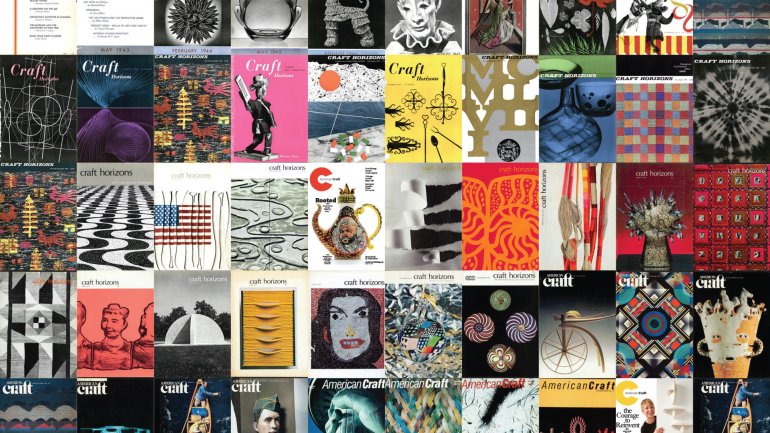Library Salon Series: Q&A with Sarah Archer
The ACC Library Salon Series resumes on September 13, and we are thrilled to welcome Philadelphia-based craft scholar and independent curator Sarah Archer to Minneapolis. Recently, Archer has been diving into all things ACC in her research and curatorial concentration, focusing on the history of Craft Horizons (American Craft’s predecessor) and craft's connection to graphic design. Learn more about her and be sure to join us for the event.
Tell us a little about yourself and your background.
I'm primarily a writer, and I curate exhibitions from time to time. I'm based in Philadelphia, and I'm on the board of Collab, the Philadelphia Museum of Art's advocacy group for contemporary design. I write for Hyperallergic, the Magazine Antiques, and right now I'm serving as a contributing editor for the ACC's new journal, American Craft Inquiry. Last year my first book, Midcentury Christmas, was published, and I'm currently at work on my second, which is about the post-war American kitchen.
Your talk centers on the connection between craft and graphic design during the 1950s and 1960s which were formative years for the craft field. In what ways did graphic design help to propel craft into the modern era?
I think graphic design gave audiences a language through which to understand craft. It was a period during which all kinds of new technologies and ideas – space travel, nuclear energy – were being explained to the general public using animation and diagrams, and this new aesthetic inspired designers and craftspeople to use abstract and dynamic shapes in their work. Swoops and starbursts where everywhere, from furniture to ashtrays to bowling alley signs, so it was a kind of vernacular language that people understood. So for Craft Horizons, using this style to evoke the forms and – in some cases – the processes by which crafts are made was a way of joining that conversation.
In your research delving into the craft/graphic design relationship – using Craft Horizons as a case study – you must have run across one-time editor in chief Rose Slivka and her impact on the field and the magazine. Are you planning to talk about her role? In what ways did she contribute to the changing design of the magazine and craft in general?
I'm obsessed with Rose Slivka. In all seriousness, her career was trailblazing and fascinating. She started her career working for general interest and women's magazines like Mademoiselle and Holiday, so she knew the mainstream magazine world well before she joined Craft Horizons. Her mother was a fiber artist, who also worked as a textile conservator at the Met, and her husband was a sculptor. She has described her circle as one in which jewelers were making sculpture and sculptors were making pottery. All kinds of cross-pollination was occurring, and that became true of Craft Horizons as well. She covered traditional mediums like wheel-thrown pots and woven textiles, but she also included features on avant-garde fashion, interior design, and other practices in which the technique or material being used was noteworthy – even plastic.
As a craft scholar familiar with the ACC’s assets, what has been one of your favorite resources in the ACC Library and Archives?
I've come to rely on the complete digital archive of Craft Horizons and various ACC documents and newsletters on the website, which is just remarkable to have, because it's searchable from anywhere.





